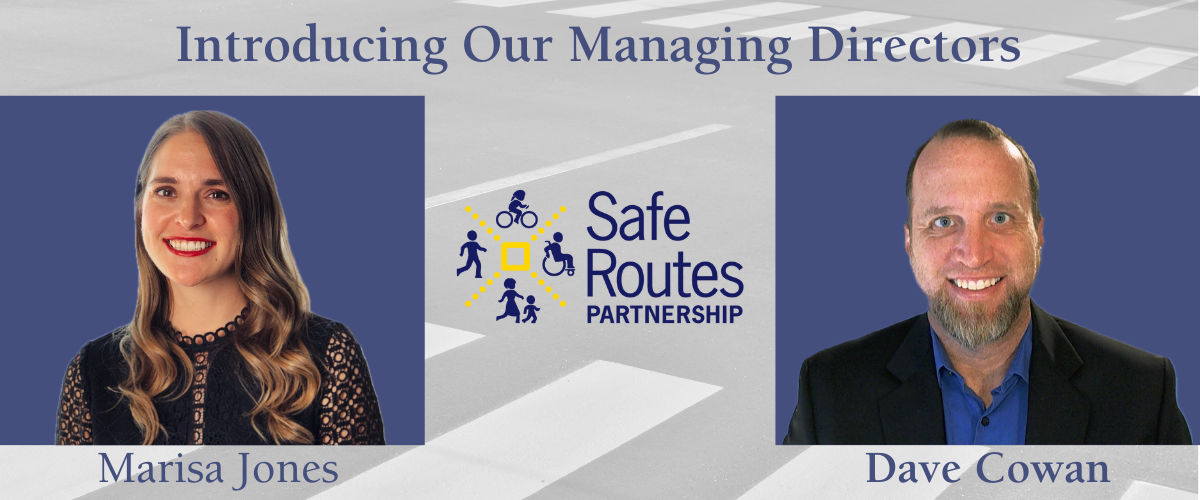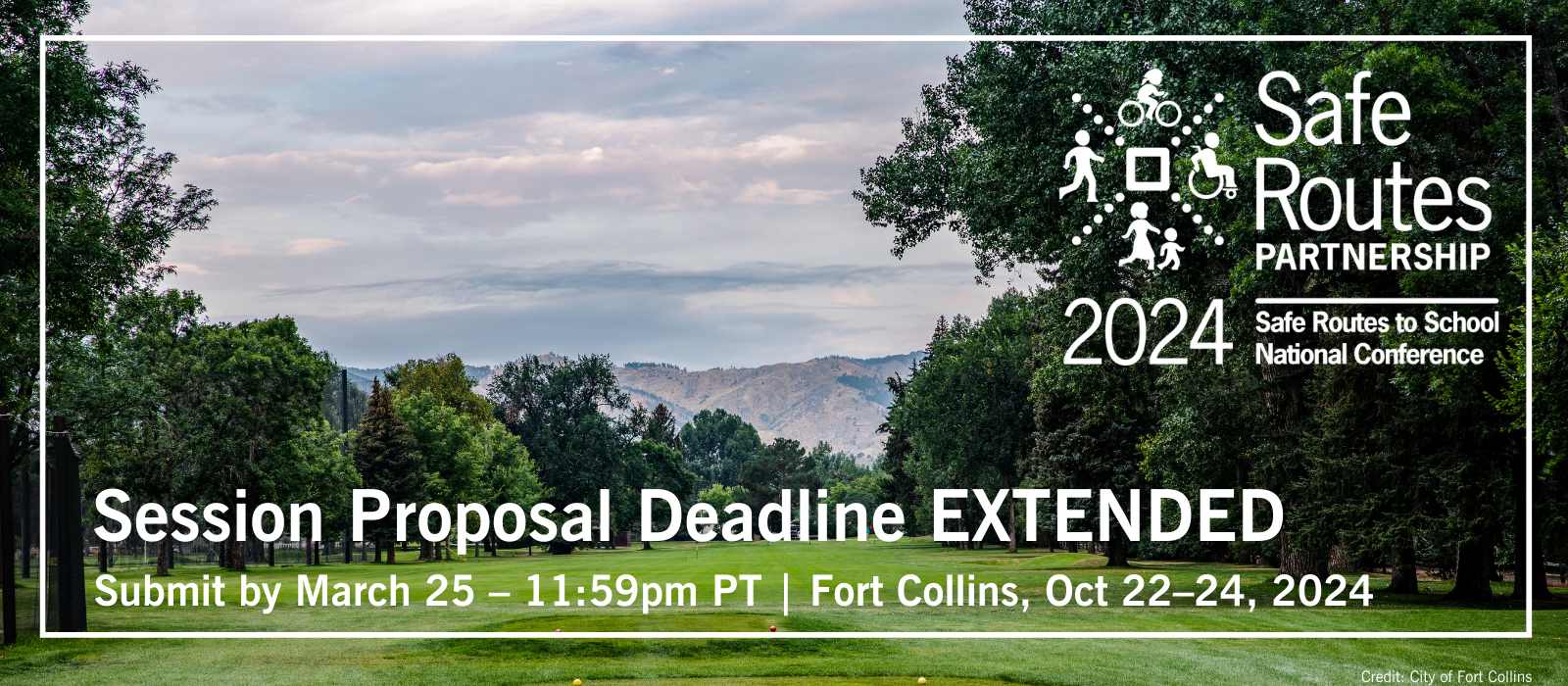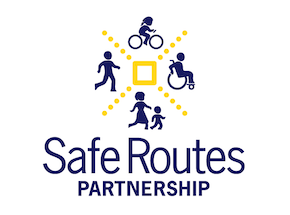We are pleased to be on the team led by Abt Global selected as a
Resource Library
Key Takeaways:
- The Safe Routes to School program that integrated a “citizen science” approach called Our Voice, increased rates of students walking and biking to/from school compared to the program that did not (24.5 percent vs. 2.6 percent.)
- The Our Voice program trained parents/caregivers to gather, analyze, and utilize data to inform Safe Routes to School activities experienced. Participants of the Our Voice program were more likely to initiate actions to address barriers to walking and biking including meetings with stakeholders compared to the Safe Routes to School program that did not utilize the program.
- The Safe Routes to School program in the elementary school that used Our Voice also had more frequent encouragement activities such as walk/bike events, walking school buses, and walk & roll to school days.
- The Our Voice program that engaged and trained middle school students as citizen scientists experienced high initial engagement by students who sought to implement actions to address barriers to biking and walking.
Key Takeaways:
- The United States has one of the lowest rates of walking as a percentage of all trips (12 percent), compared to the United Kingdom which has the highest (26 percent).
- While countries like Canada, Denmark, and the Netherlands have experienced declines in pedestrian fatality rates, the US is an outlier, as pedestrian fatality rates (pedestrian fatalities per 100,000 population) have risen 25 percent from 2010 to 2020.
- Compared to peer countries, the United States has the most variation among its major cities in rates of walking to work, with some cities walking rates being six times higher than others. For example, 13 percent of Washington D.C. residents walk to work whereas Houston residents only walk to work 2 percent of the time.
- People are more likely to choose walking as a mode of travel when they are in the innermost city center and when the distance is less than one mile.
- Walking rates remain roughly stable with increasing age in the US, although at the relatively low rate of 12% of trips percent. In peer countries, walking trips are higher in youth (<16) and older adults (60+), but decline in the middle age group.
- Western European countries such as the UK, Germany, Denmark, and the Netherlands have narrower roadways; overall lower speed limits; slower turn speeds as well as turn restrictions; and lower traffic volumes than the US.
- Traffic calming in residential streets is much more common in European cities than U.S. cities. Some cities in Denmark and Germany have designated some residential streets as home zones with speed limits of only 4.5 mph. In-home zones, drivers must yield to pedestrians, cyclists, and children playing in the street, thus fully sharing the street with them.
- Schools in the Netherlands, Denmark, and Germany offer traffic education as a part of their curriculum, and by fourth grade, children have taken practical training in safe walking and bicycling skills.
- One mile is a reasonable distance to travel. Schools should encourage kids within a mile radius of school to walk to school.
Key Takeaways:
- Policies supporting “Convenient Transport Infrastructure’ such as implementing bike lanes, convenient footpaths, walking trails, and pedestrian crossings paths, or increasing the proximity of public transport stops had the greatest positive association with more physical activity than any of the other two policy areas.
- Statewide programs promoting awareness about active mobility have the greatest impact on increased walking and biking and were most effective in increasing physical activity at the community-level.
- Active travel training and events such as bike skills training and campaigns that raise awareness about the benefits of walking, biking, and public transportation are effective in increasing rates of physical activity.
Key Takeaways:
- Under-resourced communities experience several barriers to accessing funding for Safe Routes to School. Barriers included the ability to come up with the local match often required for federal funds; the lack of resources and personnel to apply for, write, and administer grants; and simply the lack of knowledge of what is available and how to apply for grants.
- Of the states surveyed (n=14), 63 percent provide special considerations to disadvantaged communities when they apply for funding for Safe Routes to School and apply additional points when scoring their grant applications. Some respondents also describe their state’s efforts to address barriers to funding by providing training, consultation, and proactive outreach to underserved communities.
- How states determine the effectiveness of their Safe Routes to School programs vary widely and differ from state to state. Examples of how states evaluate their programs include the number of schools involved in Safe Routes to School programs, the amount of funding that reaches priority populations, the number of people who access resources and training, the mode split of students walking and biking to school, percent of schools or districts with a dedicated Safe Routes to School coordinator, safety improvements, and pre/post program crash data.
- Only six states that responded have a strategic plan for their Safe Routes to School program. Of those plans, four include equity and a focus on underserved populations.
- Of the “Six E’s” -Engagement was ranked as the most prioritized by state program coordinators. States described the importance of engagement to cultivate community and school buy-in, and the importance of local stakeholders (ex. parents, teachers, students, neighbors, etc.) to the success of a program.
- Of the “Six E’s,” Evaluation was the least prioritized. State coordinators described the barriers to collecting quality data and the lack of staff and resources.
Key Takeaways:
- African Americans are more likely to use biking to travel to school. Of the total number of survey respondents, 13 percent of African Americans reported biking to school compared to nine percent of respondents from other racial groups.
- African American respondents are more likely to use bicycling than other people of color.
- African-American households are more likely than white households to use walking and biking to reduce the financial burden of travel.
- African American survey respondents were more likely than white survey participants to identify bad lighting, heavy traffic, and lack of pedestrian facilities such as paths, parks, or sidewalks as barriers to biking and walking.
- African Americans take fewer bike trips per week than white Americans and are least likely to utilize bike-share programs.
At the end of April, we had a chance to visit two of the four Colorado communities participating in our 2024 Safe Routes to Parks Activating Communities program. For the last four months, each community has hosted engagement activities, surveyed residents, and collected data to inform community goals on improving local park access.
Tuesday, May 21, 2024 – 3:00 p.m. Eastern Time
Tune in on Tuesday, May 21, 2024, at 3 p.m. ET/noon PT to learn about creative, flexible, and highly accessible federal funding that can be used to advance Safe Routes to School. Safe Streets and Roads for All (SS4A) funding can be used for not only developing Safe Routes to School plans to supplement comprehensive safety action plans, but it can also be used for engagement, encouragement, and education programs! And - the application is a low lift and all eligible applicants in the past two years have been funded. We will highlight creative and exciting ways to use this fund, how to access the funding without cash match, and provide steps for applying for SS4A funds. You don't want to miss this!
Tuesday, April 30, 2024 – 1:00 p.m. Pacific Time
Please join the Safe Routes Partnership and California Transportation Commission for a webinar on April 30 about a new change in the ATP Guidelines: additional questions about the non-infrastructure program in Combined Infrastructure/Non-Infrastructure applications.
For a number of years, we have argued that the format and rubrics of Combined applications in the ATP did not allow either applicants to adequately highlight their proposed educational and encouragement programs, nor evaluators to adequately score them.
Thanks to the adoption of the online applications portable Submittable this cycle, applicants proposing Combined Infrastructure/Non-Infrastructure non-application questions will be prompted for additional information specific to their non-infrastructure components, and evaluators will be given guidance on how to evaluate them.
In this webinar, we will give an overview of the new questions, provide suggestions on how best to answer them, and answer any questions you might have.
Wednesday, May 15, 2024
2pm – 3pm ET
Join us for our final Walk, Ride, and Roll webinar of the school year! This session will explore strategies and best practices for engaging and including students with disabilities in Safe Routes programs. Our expert panelists will share how they lead and participate in inclusive programs, how they partner with local champions, and how other Safe Routes practitioners can make their programs more inclusive and accessible.
Key Takeaways:
- Safe Routes to School is one of only fourteen evidence-based interventions included in the CDC’s High-Impact in Five Years Initiative (HI-5). This initiative promotes strategies that show a positive health impact, results within five years, and are cost-effective. Safe Routes to School is the only intervention included related to active transportation.
- Safe Routes to School programs in the United States led to a reduction in traffic-related injuries around schools and neighborhoods.
- In New York City over a ten-year period, injuries decreased by 44 percent in census tracts with Safe Routes to School improvements like new crossing signs, speed bumps, speed boards, and high-visibility crosswalks.
- Texas (state-wide) pedestrian and bicyclist injury rates among school-age children decreased by 14 percent during the program study period (January 2008- June 2013).
- A study of 18 states found that Safe Routes to School programs reduced pedestrian and bicyclist injury rates in school-age children by 23 percent.
- In an evaluation of 47 California schools, pedestrian and bicycle collisions among children ages 5 to 18 in Safe Routes to School project areas were reduced by 53 percent. Evidence shows economic benefits exceed the cost of active travel to school interventions.
Communities are planning for and rolling out improvements to slow traffic speeds, improve community mobility, and make it safer for people to travel around their communities. It is essential that these plans consider how young people who rely on walking, bicycling, and transit access essential community destinations, especially schools. SS4A can elevate or re-invigorate your community’s commitment to keeping kids safe as they walk and bike throughout their communities.
Four Practical Tips to Advance Safe Routes to Parks in Your Community
In fall 2023, four communities in Pennsylvania wrapped up participation in our Safe Routes to Parks Activating Communities program.

Dear Safe Routes Community,
We want to inform you of a recent change in our leadership. Kimberlyn Clarkson stepped down from her role as Executive Director in February. We wish her well in her future endeavors.
Wednesday, April 17th, 11:00 am to 12:00 pm Mountain
How do you change the culture of active transportation in schools? Join us as we explore community engagement strategies aimed at changing behaviors and attitudes around walking, biking, and rolling. Learn how Denver’s Advancing a Culture of Active Transportation in Schools (ACATS) program became a model for community engagement, and how they leveraged this success to secure Safe Routes to School funding.
Featured Speakers:
Kori Johnson, Program and Engagement Manager, Safe Routes Partnership
Priscilla Bloom, Safe Routes to School Program Manager, City and County of Denver Department of Transportation and Infrastructure (DOTI)
Wednesday April 10th, 2024, 2–3pm Eastern
The days are longer, the weather is warmer, and National Bike Month is just around the corner! Join us for an informal Zoom session to connect with other Safe Routes practitioners and get ready for Spring programming. Share your program successes and challenges, swap resources, brainstorm project ideas, and let us know how the Partnership can support your work going forward.
NOTE: There will not be formal presentations during this session. The bulk of the time will be reserved for connecting with others during breakout groups. We will not be facilitating the discussion but we will provide guiding questions and are always available to help.

Now Accepting Session Proposals Until March 4, 2024
Session Proposal Deadline EXTENDED Until March 25, 2024 11:59pm PT
Key takeaways:
- Nearly one in four U.S. adults reported traffic as a barrier to walking where they live.
- Of the survey respondents who reported traffic as a barrier to walking, vehicle speed was identified as the leading safety concern for people walking regardless of geographical area.
- Of survey respondents who reported traffic as a barrier to walking, the most common solution to increase safety was improving sidewalks and separating the sidewalk from the road.
- There is a mismatch between what people report as preferred safety improvements and what current guidance on speed reduction for improved safety recommends. For example, while vehicle lane reduction is a common method for safety improvements related to speed, only 10 percent of participants chose this as a preferred safety improvement method.
- Compared to those who walk for leisure or activity, people who walk as a mode of transportation were more likely to report the volume and type of vehicles as a concern and to select safety strategies that slow down vehicles.
Key takeaways:
- The percentage of individuals participating in any active transportation for both adolescents and young adults was higher among males, Black and Hispanic racial and ethnic groups, and low-income participants.
- A higher percentage of low-income youth and youth of color participated in active transportation compared with white and high-income peers.
- Young adults and females were less likely to participate in any active transportation.
- This study may suggest that active transportation interventions may support healthy weight among youth, however, some variables may mitigate this effect. For example, youth from low-income families and youth of color were more likely to engage in active transportation but were also more likely to have higher body weights.
- Black adolescents were 10 percent more likely and Hispanic adolescents were 20 percent more likely to engage in active transportation compared to white adolescents.
- Although active transportation accounted for only 18 percent of physical activity for adolescents and 16 percent for young adults, this study suggests that active transportation can be leveraged to promote overall physical activity.
Key takeaway:
- Children who used active transportation to travel to school at a young age were more likely to continue to do so as they got older. Children who did not use active transportation to travel to school were not likely to take up the habit as they got older.
- For every one-tenth of a mile increase of distance from home to school a child’s likelihood of using active transportation to travel to school decreased by eight percent.
- Students within the study area who used active transportation to travel to school at a young age were more likely to continue to use active transportation despite an increase in distance from home to school as they got older.
- The likelihood of children using active transportation to school was almost twice as high if the parent perceived their neighborhood as safe compared to if it was perceived as unsafe.

